Salcido A. (ed.) Cellular Automata - Simplicity Behind Complexity
Подождите немного. Документ загружается.


system-evolutions that are invisible and usually remain obscured by a s eemingly chaotic
behaviour of the system.
4. Final remarks
We have shown how the simple rules determining the CA evolution character can lead
to a complicated evolution of the model considered. The model discussed here exhibits
various features characteristic of the real cavity system. We proposed application of various
parameters and investigation methods to characterize the dynamics of the model and hence,
its physical properties.
Our model can be treated as a starting point for further investigation. For instance, two
or more dimensional systems can be considered instead of one-dimensional one discussed
here. Moreover, other mechanisms of energy dissipation than by the “mirrors” considered
in this work, and excitation processes also can be taken into regard. However, it should be
emphasized that despite the simplicity of the model proposed, it turned out to be a fruitful
tool for dynamics investigation.
5. References
Allen L. & Eberly J. H. (2007) Optical Resonance And Two-Level Atoms, Dover Publications, Inc.,
ISBN 9780486655338, Mineola, New York
Barclay M., Andersen H. & Simon C. (2010). Emergent Behaviors in a Deterministic Model of
the Human Uterus, Reproductive Sciences, Vol. 17, No. 10, 948-954
Bendat J. S. & Persol A. G. Random Data - Analysis and Measurement Procedures, J. Wiley & Sons,
Inc., ISBN 978-0-470-24877-5, Hoboken, New Jersey
Butler, J. T (1973). A note on cellular automata simulations, Information and Control, Vol. 26,
No. 3, 286-295
Cleveland W. S. (1979). Robust locally-weighted re- gression and smoothing scatterplots, J.
Am. Stat. Assoc., Vol. 74, No. 368, 829-836
Clevlelend W. S. & Devlin S. J. (1998) Locally Weighted Regression: An Approach to
Regression Analysis by Local Fitting Journal of the American Statistical Association Vol.
83 No. 403, 596-610
Combinido J. S. L. & Lim M. T. (2010). Modeling U-turn traffic flow, Physica A, Vol. 389, No.
17, 3640-3647
Dabaghian V., Jackson P., Spicer V & Wuschke K. (2010). A cellular automata model on
residential migration in response to neighborhood social dynamics, Math. Comp.
Modell. Vol. 52, No. 9-10, 1752-1762
Eckmann J.-P., Kamphorst S. O. & Ruelle D. (1987). Recurrence Plots of Dynamical Systems,
Europhys. Lett. Vol. 4, No. 9, 973-977
Guisado J. L., Jimenez-Moralez F. & Guerra J. M. (2003). Cellular automaton model for the
simulation of laser dynamics, Phys. Rev. E, Vol. 67, No. 6, 066708
Kondrat G. & Sznajd-Weron K. (2010). Spontaneous Reorientations in a Model of Opinion
Dynamics with Anticonformists, Int. J. Mod. Phys. C, Vol. 21, No. 4, 559-566
Kowalewska-Kudłaszyk A. & Leo ´nski W. (2006). Two-Level Systems, their Evolution and
Cellular Automata Method, Acta Phys. Hung. B, Vol. 26, No. 3-4, 247-252
Kowalewska-Kudłaszyk A. & Leo´nski W. (2008). Cellular automata and two-level systems
dynamics – Spreading of Disorder, J. Comp. Meth. Sci. Eng., Vol.8, No. 1-2, 147-157.
437
Cellular Automata – a Tool for Disorder, Noise and Dissipation Investigations

Ladd A. C. & Colvin M. E. (1988). Application of lattice-gas cellular automata to the Brownian
motion of solids in suspension, Phys. Rev. Lett., Vol. 60, No. 11, 975-978
Lejeune A., Perdang J. & Richert J. (1999). Application of cellular automata to N-body systems,
Phys.Rev.E, Vol. 60 No. 3, 2601-2611
Margolus N., Toffoli T. & V ichniac G. (1986). Cellular-Automata Supercomputers for
Fluid-Dynamics Modeling, Phys.Rev.Lett., Vol. 56, No. 16, 1694-1696
Marwan N., Romano M. C., Thiel M. & Kurths J. (2007). Recurrence Plots for the Analysis of
Complex Systems, Physics Reports, Vol.438, No. 5-6, 237-329.
Kondrat G. & Sznajd-Weron K. (2009) Spontaneous Reorientations in a Model of Opinion
Dynamics with Anticonformists, Int. J. Mod. Phys. C, Vol.21 No. 4, 559-566
Rosin P. L. (2010). Comp. Vision Image Understanding, Vol. 114, No. 7, 790-802
Vichniac G., (1984). Simulating Physics with Cellular Automata. Physica D,Vol.10,No.1-2,
96-116
Walczak M. & Leo´nski W. (2003) A cavity with two-level atoms and cellular automata, Fortchr.
Phys., Vol. 51, No. 2-3, 186-189
Zeng H. C., Pukkala T., Peltola H. & Kellomaki S. (2010) Optimization of irregular-grid cellular
automata and application in risk management of wind damage in forest planning,
Can. J. Forrest Res., Vol. 40, No. 6, 1064-1075
438
Cellular Automata - Simplicity Behind Complexity
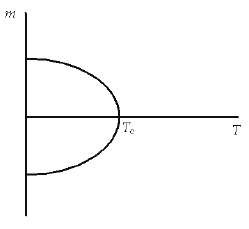
21
Cellular Automata Simulation of
Two-Layer Ising and Potts Models
Mehrdad Ghaemi
Tarbiat MoallemUniversity
Iran
1. Introduction
One of the most interesting phenomena in the physics of the solid state is ferromagnetism.
Ferromagnetism and antiferromagnetism are based on variations of the exchange
interaction, which is a consequence of the Pauli principle and the Coulomb interaction. In
the simplest case of the exchange interaction of two electrons, two atoms or two molecules
with the spins
1
σ
and
2
σ
, the interaction has the form
12
EJ
σ
σ
=
− , where J is a coupling
constant which depends on the distance between the spins. When the coupling constant is
positive, then a parallel spin orientation is favored. This leads in a solid to ferromagnetism.
This happens, however, only when the temperature is lower than a characteristic
temperature known as the Curie temperature. Above the Curie temperature the spins are
oriented at random, producing no net magnetic field (Fig. 1). As the Curie temperature is
approached from both sides the specific heat of the metal approaches infinity.
Fig. 1. Temperature dependence of magnetization
When the coupling constant is negative, then an antiparallel spin orientation is preferred. In
a suitable lattice structure, this can lead to an antiferromagnetic state. The exchange
interaction is short-ranged; but owing to its electrostatic origin it is in general considerably
stronger than the dipole-dipole interaction. Examples of ferromagnetic materials are Fe, Ni,
EuO; and typical antiferromagnetic materials are MnF2 and RbMnF3.
The Ising model is a crude attempt to simulate the structure of a physical ferromagnetic
substance. This model plays a very special role in statistical mechanics and generates the

Cellular Automata - Simplicity Behind Complexity
440
simplest nontrivial example of a system undergoing phase transitions. Its analysis has
provided us with deep insights into the general nature of phase transitions which are
certainly better understood nowadays after the publication of the hundreds of papers which
followed the pioneering work of Onsager (Onsager, 1944).
Although, at zero magnetic field, there is an exact solution for the 2-dimensional (2-D) Ising
model (Onsager, 1944 and Huang, 1984), however, there is no such a solution for the two-
layer Ising and Potts models. The Potts models are the general extension of the Ising model
with q-state spin lattice i.e., the Potts model with q = 2 is equivalent to the Ising model.
Although we do not know the exact solution of the two-dimensional Potts model at present
time, a large amount of the numerical information has been accumulated for the critical
properties of the various Potts models. For further information, see the excellent review
written by Wu (Wu, 1982) or the references given by him.
The two-layer Ising model, as a simple generalization of the 2-D Ising model has of long
been studied (Ballentine, 1964; Allan, 1970; Binder, 1974; and Oitmaa & Enting, 1975). The
two-layer Ising model as a simple model for the magnetic ultra-thin film has various
possible applications to real physical materials. For example, it has been found that capping
PtCo in TbFeCo to form a two-layer structure has applicable features, for instance, raising
the Curie temperature and reducing the switching fields for magneto optical disks
(Shimazaki et al., 1992). The Cobalt films grown on a Cu (100) crystal have highly
anisotropic magnetization (Oepen et al., 1990) and could be viewed as layered Ising models.
From the theoretical viewpoint, the two-layer Ising model as an intermediate between 2-D
and 3-D Ising models, is important for the investigation of crossover from the 2-D Ising
model to the 3-D Ising model. In particular, it has been argued that the critical point of the
latter could be found from the spectrum of the 2-layer Ising model (Wosiek, 1994). In recent
years, some approximation methods have been applied to this model (Angelini et al., 1995;
Horiguchi et al., 1996; Angelini et al., 1997 and Lipowski & Suzuki, 1998). It is also argued
that the two-layer Ising model is in the same universality class as the two dimensional Ising
model (Li et al., 2001).
Since the exact solution of the Ising model exists only for the one- and two-dimensional
models, the simulation and numerical methods may be used to obtain the critical data for
other models. One of the numerical methods is using the transfer matrix and decreasing the
matrix size (Ghaemi et al., 2004). Ghaemi et al. have used the transfer matrix method to
construct the critical curve for a symmetric two-layer Ising model. In another work (Ghaemi
et al., 2003), they have used this method to get the critical temperature for the anisotropic
two-layer Ising model. Such calculations are limited to lattice with the width 5 cells in each
layer and the critical point is obtained by the extrapolation approach. There are other
numerical methods for solving the Ising models.
However, the numerical methods mentioned above are time consuming and advanced
mathematics is required when they may be used for extended models like the anisotropic
two-layer Potts model. In most cases, simulation methods are simple and fast. They are also
less restricted to the lattice sizes. There are different simulation methods which have been
used to describe Ising and Potts models. Monte Carlo is one of the simulation methods
which has been widely used for studying Ising models (Zheng, 1998). In addition, the
multicanonical Monte Carlo studies on Ising and Potts models are highly used in recent
years (Janke, 1998 and Hilfer et al., 2003). The Cellular Automata (CA) are one of methods
that could be used to describe the Ising model. The CA are discrete dynamic systems with
simple evolution rules that have been proposed as an efficient alternative for the simulation

Cellular Automata Simulation of Two-Layer Ising and Potts Models
441
of some physical systems. There are some different approaches which are based on the CA
method. The Q2R automaton is an approach which is used for the microcanonical Ising
model. It is deterministic, reversible and nonergodic and also very fast method. Many works
have been performed based on this model (Stauffer, 2000; Kremer & Wolf, 1992; Moukarzel
& Parga, 1989; Stauffer, 1997; Glotzer & Stauffer, 1990; Zabolitzky & Herrmann, 1988; and
MacIsaac, 1990). Although the Q2R model is deterministic and hence is fast, it was
demonstrated that the probabilistic model of the CA like Metropolis algorithm (Metropolis
et al., 1953) is more realistic for description of the Ising model even though the random
number generation makes it slower. There is a main different between the Cellular
Automata (CA) method and the Monte-Carlo method which is in the updating of a system
in each step. In the Monte-Carlo method, only one site or a cluster which is randomly
chosen is updated in each step. However, in the CA, all sites are updated in each time step
without a random selection.In addition to the Monte Carlo method, it was proposed that the
Cellular Automata (CA) could be a good candidate to simulate the Ising models (Domany &
Kinzel , 1984).
In the last two decade a large amount of works were done for describing Ising models by the
CA approach and a great number of papers and excellent reviews were published (MacIsaac,
1990; Creutz, 1986; Toffoli & Margolus, 1990; Kinzel, 1985; and Aktekin, 1999). Most of the
works that have been done until now are focused on the qualitative description of various
Ising and Potts models or to introduce a faster algorithm. For example, the Q2R automaton as
a fast algorithm was suggested which has been studied extensively (Vichniac, 1984; Pomeau,
1984; Herrmann, 1986; Glotzer et al., 1990; Moukarzel & Parga, 1989; and Jan, 1990). It was so
fast, because no random numbers must be generated at each step. But in the probabilistic CA,
like Metropolis algorithm, generation of the random number causes to reduce the speed of
calculation, even though it is more realistic for describing the Ising model.
2. Isotropic two-layer Ising model
Consider a two-layer square lattice with the periodic boundary condition, each layer with r
rows and p columns. Each layer has then rp
×
sites and the number of the sites in the lattice
is
2 rpN×× = . We consider the next nearest neighbor interactions as well, so the number of
neighbor for each site is 5. In the two-layer Ising model, for any site we define a spin
variable
1(2 )
(, ) 1ij
σ
=
± in such a way that 1,...,ir
=
and 1,...,jp
=
where superscript 1(2)
denotes the layer number. We include the periodic boundary condition as
1(2 ) 1(2 )
(,) (,)ir
j
i
j
σσ
+=
(1)
1(2 ) 1(2)
(, ) (, )i
jp
i
j
σσ
+= (2)
The configuration energy for this model may be defined (Ghaemi et al., 2003) as:
,*
,*
2
111
12
11
()
{ (,) ( 1,)
(, ) (, 1)} (, ) (, )
p
r
nn
x
ijn
p
r
nn
yz
ij
E
Kijij
kT
K ij ij K ij ij
σ
σσ
σσ σσ
===
==
=− + +
+−
∑∑∑
∑∑
(3)
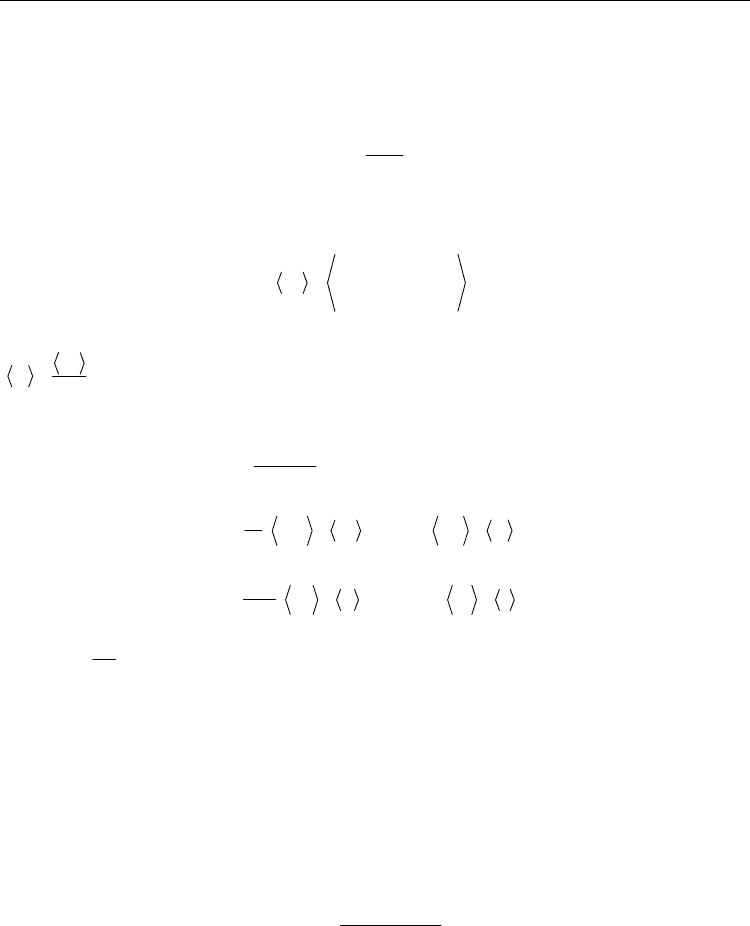
Cellular Automata - Simplicity Behind Complexity
442
where * indicates the periodic boundary conditions (eqs 1,2), and Kx and Ky are the nearest-
neighbor interactions within each layer in the x and y directions, respectively, and Kz is the
interlayer coupling.
Therefore, the configuration energy per spin is
()E
e
kTN
σ
= (4)
The average magnetization of the lattice for this model can be defined (Newman &
Barkema, 2001) as
,*
,*
2
111
(, )
p
r
n
ijn
M
ij
σ
===
=
∑∑∑
(5)
and the average magnetization per spin is
M
m
N
= (6)
The magnetic susceptibility per spin (
χ
) and specific heat per spin (C) is defined as
22
()
M
MM
β
β
∂
<>
=
<>−<>
∂
(7)
(
)
(
)
22
22
MM Nmm
N
β
χβ
=−= −
(8)
()()
2
22
222
k
CEEkNee
N
β
β
=−= − (9)
where
1
kT
β
=
.
In the present work, we considered the isotropic ferromagnetic and symmetric case i.e.
K
x
=K
y
=K
z
=K 0≥ . We have used a two-layer square lattice with 2500
×
2500 sites in each layer
with the periodic boundary condition. The Glauber method (Glauber, 1963) was used with
checkerboard approach to update sites. For this purpose the surfaces of two layers are
checkered same as each others. For updating the lattice, we use following procedure: after
updating the first layer, the second layer could be updated.
The updating of the spins is based on the probabilistic rules. The probability that the spin of
one site will be up (
i
p
+
) is calculated from
i
ii
E
i
EE
e
p
ee
β
ββ
+
+
−
−
+
−−
=
+
(10)
where
{ (,) ( 1,) (,) ( 1,) (,) (, 1)
( , ) ( , 1) ( , ) ( , )}
nn nn nn
i
nn nn
E K ij i j ij i j ij ij
ij ij ij ij
σσ σσ σσ
σσ σσ
±
′
=
−++−++
+−+
(11)
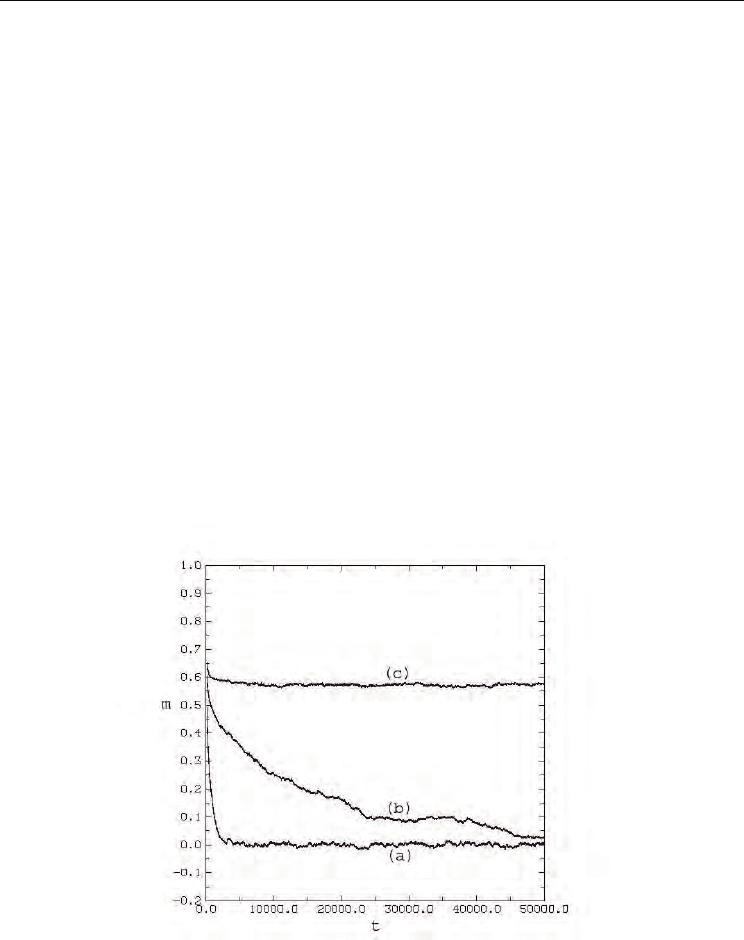
Cellular Automata Simulation of Two-Layer Ising and Potts Models
443
and
(, ) 1 for
(, ) 1 for
n
i
n
i
ij E
ij E
σ
σ
+
−
=+
=−
(12)
and ( , )
n
ij
σ
′
is the neighboring site (i,j) in the other layer. Hence, the probability that the
spin to be down is
1
ii
p
p
−
+
=
−
(13)
The approach is as follow: first a random number is generated. If it is less than
i
p
+
, the spin
of the site (
i,j) is up, otherwise (it means that random number is greater than
i
p
+
), it will be
down.
When we start CA with the homogeneous initial state (namely, all sites have spin up or +1),
before the critical point (
K
C
), the magnetization per spin (m) will decay rapidly to zero and
fluctuate around it. After the critical point,
m will approach to a nonzero point and fluctuate
around it; and with increasing of
K, the magnetization per spin will increase. But at the
critical point,
m will decay very slowly to the zero point and the fluctuation of the system
will reach to a maximum. For each
K, the time that m reaches to the special point and starts
to fluctuate around it is called the relaxation time (
τ
). On the other words, the relaxation
time is the time that the system is thermalized. The value of
τ
can be obtained from the
graph of
m vs. t (Fig. 2).
Fig. 2. The magnetization versus time in the two-layer Ising model. for 3 states. a:
K=0.304
(
K<K
c
),
τ
=3500. b: K=0.310 (K=K
C
),
τ
=46000. c: K=0.313 (K>K
c
),
τ
=4000. (each layer has
2500
× 2500 sites, start from homogeneous initial state “all +1”, time steps = 50000)
One can see from these graphs that the relaxation time increases before critical point and
reaches to a maximum at
K
C
, but after the critical point,
τ
decreases rapidly. So, in the
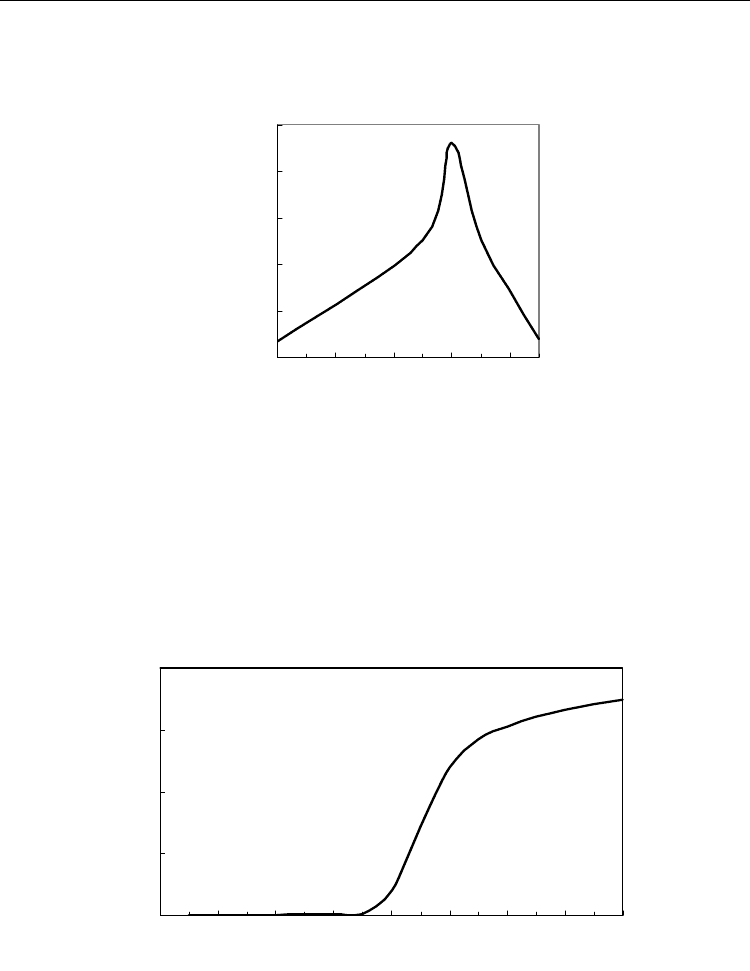
Cellular Automata - Simplicity Behind Complexity
444
critical point, the system last a long time to stabilized. Hence, the critical point may be
obtained from the graph of
τ
vs. K (Fig. 3). The obtained critical point from this graph is
0.310 for the two-layer Ising model.
0
10000
20000
30000
40000
50000
0.304 0.306 0.308 0.31 0.312
K
Relaxation Time
Fig. 3. The relaxation time obtained from Figure 1 versus K for the two-layer Ising model.
The maximum appears at K=Kc
In our approach, we have calculated the thermodynamic quantities after thermalization of
the lattice. In other words, first we let the system reaches to a stable state after some time
step (
t=
τ
), and then to be updated up to the end of the automata (t=50000). For example to
calculate the average value of magnetization per spin (<
m>), one should add all values of m
from the relaxation time up to the end of the automata (or end of the time step) and divide
the result to number of steps. The other way for calculation of the critical point is the usage
of <
m>. By drawing the graph of <m> vs. K, we may also obtain K
C
. Fig. 4 shows the results
0
0.2
0.4
0.6
0.8
0.302 0.304 0.306 0.308 0.310 0.312 0.314 0.316 0.318
K
<m>
Fig. 4.
<m> versus coupling coefficient (K) for the two-layer Ising model. The average value
for each
K is calculated after its relaxation time. (data are the results for the lattice that each
layer has 2500
× 2500 sites, starting from the homogeneous initial state with all +1, time steps
= 50000)

Cellular Automata Simulation of Two-Layer Ising and Potts Models
445
of such calculation. As it is seen, before critical point (K<K
C
), <m>=0 and after that (K> K
C
),
<
m> ≠ 0. The obtained values of the critical point from this approach is K
C
=0.310 for the
two-layer Ising model.
For calculation of
χ
for each K, first we have calculated the value of
2
()mm
−
<> in each
time step. Then these values are averaged in a same way explained above. According to eq.
8 this average could be used for computation of
χ
. Using eq. 9 for calculation of the specific
heat (
C), we have done it in a same way described above. Figures 5 and 6 show the graphs
of
χ
vs. K and C vs. K, respectively, for the two-layer Ising model. These graphs are the other
ways for obtaining the critical point. The maximum of these graphs indicates the critical
point. The obtained value for
K
C
from these graphs is 0.310 for the two-layer Ising model.
0
0.0001
0.0002
0.0003
0.302 0.304 0.306 0.308 0.31 0.312 0.314 0.316 0.318
K
X
Fig. 5. Magnetization susceptibility per spin (
χ
) versus K for the two-layer Ising model.
(The calculated data are the results for the lattice for which each layer has 2500
× 2500 sites,
starting from the homogeneous initial state with all spins up, time steps = 50000)
3. Isotropic two-layer 3-state Potts model
Although we do not know the exact solution of the Potts model for any two-layer at present
time, a large amount of numerical information has been accumulated for the critical
properties of the various Potts models. Consider a two-layer square lattice with the periodic
boundary condition, each layer with
p columns and r rows. Each layer has then rp× sites
and the number of the sites in the lattice is
2 rpN
×
×= . We consider the next nearest
neighbor interactions as well, so the number of neighbors for each site is 5. For any site we
define a spin variable
1(2)
(, ) 0, 1ij
σ
=
± so that 1,...ir
=
and 1,...,jp
=
. The configurational
energy of a standard 3-state Potts model is given (Asgari et al., 2004) as:
12
,*
,*
2
(,), ( 1,) (,), (, 1) (,), (,)
111
()
{}
nn nn
p
r
xyz
i
j
i
j
i
j
i
j
i
j
i
j
ijn
E
KKK
kT
σσ σσ σσ
σ
δδδ
++
===
=− + +
∑∑∑
(14)
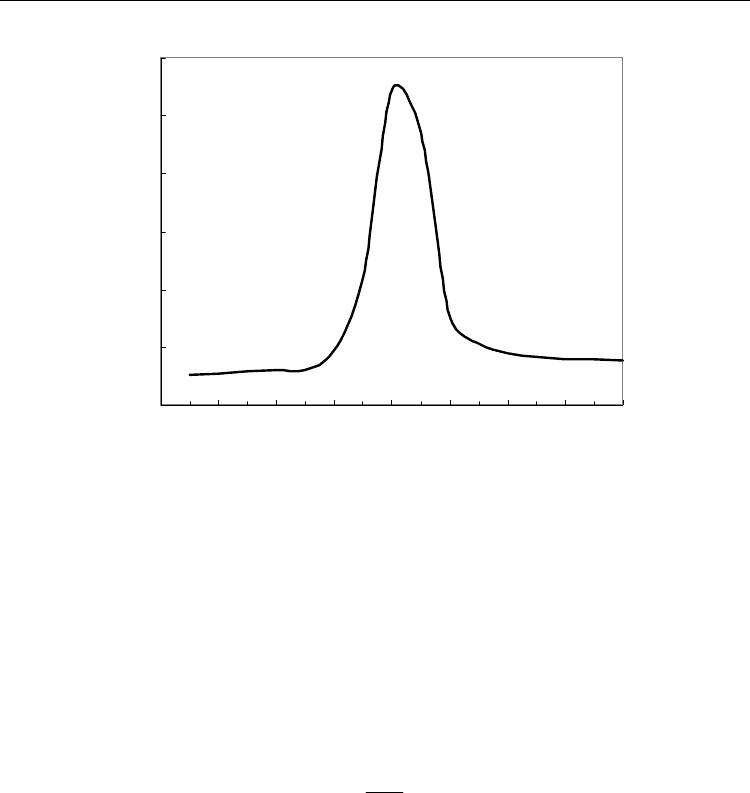
Cellular Automata - Simplicity Behind Complexity
446
0
0.3
0.6
0.9
1.2
1.5
1.8
0.302 0.304 0.306 0.308 0.31 0.312 0.314 0.316 0.318
K
C
Fig. 6. Specific Heat per spin (
C) versus K for the two-layer Ising model. (The calculated data
are the results for the lattice for which each layer has 2500
×
2500 sites, starting from the
homogeneous initial state with all spins up, time steps = 50000)
Where
,
,
1 for
0 for
ij
ij
i
j
i
j
δ
δ
=
=
=
≠
(15)
and * indicates the periodic boundary condition and K
x
and K
y
are the nearest-neighbor
interactions within each layer in x and y directions, respectively, and K
z
is the interlayer
coupling. Therefore, the configurational energy per spin is
()E
e
kTN
σ
=
(16)
and the general equations (5-9) are applicable to this model. For quantitative computation of
the critical temperature of a two-layer 3-state Potts model, we considered the isotropic
ferromagnetic case which K
x
= K
y
= K
z ≥
0. We have used a two-layer square lattice that each
layer has 1500
× 1500 sites and to reduce the finite size effects the periodic boundary
condition is used. Each site can have a value of +1, -1 or zero. We used the Glauber method
with checkerboard approach to update the sites. Namely, each layer is like a checkered
surfaces and at first, the updating is done for the white parts of the first layer. Then the black
ones are updated. After which, this approach is done for the second layer. The updating of
+1 spins is based on the probabilistic rules. The probability that spin of one site will be +1
(
i
p
+
) is given by
